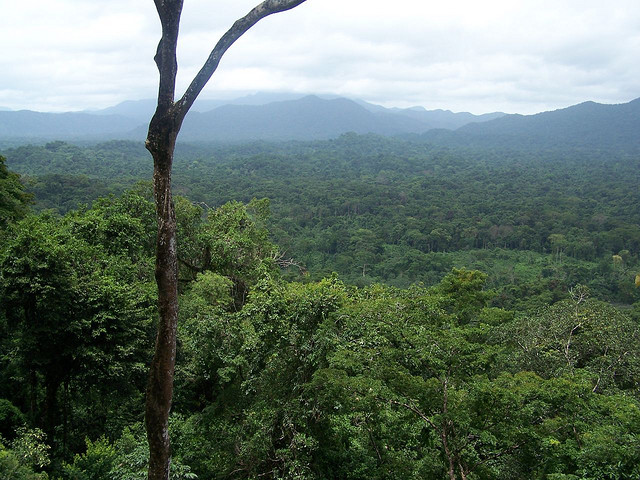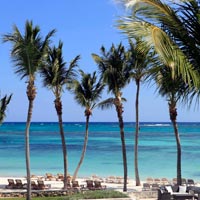
- Home
- Travel Packages
- Top Destination
-
Travel Attraction
By Category
Top Attraction

- Travel Agents
- Car Rentals
- Hotels

About Rao Platano Biosphere Reserve The Rao Platano Biosphere Reserve is a protected area located in the La Mosquitia region of Honduras. It was established in 1980 and covers an area of 5,250 square kilometers. The reserve is known for its diverse range of ecosystems, including tropical rainforests, mangroves, and wetlands, making it a haven for a wide variety of flora and fauna. Location and Geographical Overview The Rao Platano Biosphere Reserve is situated in the eastern part of Honduras, near the Caribbean coast. It is part of the larger La Mosquitia region, which is characterized by its dense forests, swamps, and rivers. The reserve is home to a number of indigenous communities, as well as a rich biodiversity that includes jaguars, tapirs, and a variety of bird species. Opening and Closing Time The Rao Platano Biosphere Reserve is open to visitors from 8:00 AM to 4:00 PM, Monday through Sunday. Entry Fee There is no entry fee for visiting the Rao Platano Biosphere Reserve. However, donations are welcome to support conservation efforts and the local communities. Species-Flora/Fauna Availability The reserve is home to a wide variety of plant and animal species, including rare orchids, mahogany trees, howler monkeys, and scarlet macaws. Visitors may also spot jaguars, tapirs, and various reptiles and amphibians. Activities Performed Visitors to the Rao Platano Biosphere Reserve can enjoy a range of activities, including hiking, birdwatching, and wildlife spotting. There are also opportunities for guided tours, canoeing, and cultural experiences with the indigenous communities. Jeep Safari Charges Jeep safari tours are available for an additional fee. Prices vary depending on the duration and itinerary of the tour. It is recommended to book in advance. Age Criterion and Entry Fee Entry to the Rao Platano Biosphere Reserve is free for children under 12 years old. The entry fee for male and female visitors over 12 years old is $10. Senior citizens aged 60 and above can enter for a discounted rate of $5. Senior Citizen Facilities The reserve provides facilities for senior citizens, including accessible trails, rest areas, and guided tours tailored to their needs. Wheelchairs and other assistance devices may also be available upon request. Best Time to Visit The best time to visit the Rao Platano Biosphere Reserve is during the dry season from November to April when the weather is pleasant and wildlife is more active. However, the reserve can be visited year-round, with each season offering unique experiences. Nearby Places to Visit There are several attractions near the Rao Platano Biosphere Reserve that visitors may also enjoy, such as the Rio Platano Wildlife Reserve, the Tawahka Asangni Biosphere Reserve, and the ancient ruins of the Lost City of the Monkey God. Vehicle Parking Facility Parking facilities are available at the entrance of the reserve for visitors who are driving their own vehicles. The parking area is secure and monitored by staff. Rules and Regulations Visitors to the Rao Platano Biosphere Reserve are required to follow certain rules and regulations to ensure the conservation of the area. These include staying on designated trails, not feeding wildlife, and respecting the customs and traditions of the indigenous communities. How to Reach and Other Related Information The Rao Platano Biosphere Reserve can be reached by flying into the nearest airport in La Ceiba and then taking a bus or private transportation to the reserve. It is also accessible by boat from coastal towns such as Trujillo and Puerto Lempira. Visitors are advised to check the weather conditions and make arrangements in advance for their trip to the reserve. Overall, the Rao Platano Biosphere Reserve offers a unique opportunity to explore the beauty of the La Mosquitia region and connect with nature and indigenous cultures. It is a must-visit destination for eco-tourists, wildlife enthusiasts, and those seeking an off-the-beaten-path adventure in Honduras.
Explore More
About Punta Sal National Park Punta Sal National Park is a stunning nature reserve located in Tela, Honduras. The park is known for its diverse ecosystem, including pristine beaches, lush tropical forests, and vibrant marine life. Visitors to Punta Sal National Park can enjoy a wide range of outdoor activities, such as hiking, bird watching, snorkeling, and more. The park is home to a variety of plant and animal species, making it a popular destination for nature enthusiasts and wildlife lovers. Location and Geographical Overview Punta Sal National Park is situated on the northern coast of Honduras, near the town of Tela. The park covers an area of approximately 5,600 hectares and features a diverse landscape of beaches, mangroves, and tropical rainforests. The crystal-clear waters of the Caribbean Sea are a highlight of the park, offering visitors the chance to explore coral reefs and marine life. Opening and Closing Time The park is open daily from 8:00 AM to 5:00 PM, allowing visitors to explore its natural beauty during daylight hours. Entry Fee The entry fee for Punta Sal National Park is $10 per person, with discounts available for children, seniors, and local residents. Species-Flora/Fauna Availability Punta Sal National Park is home to a wide variety of plant and animal species, including tropical birds, monkeys, iguanas, and more. The park is also known for its vibrant coral reefs, which support a diverse array of marine life. Activities Performed Visitors to Punta Sal National Park can enjoy a range of outdoor activities, such as hiking, swimming, snorkeling, and bird watching. The park also offers guided tours and educational programs for visitors of all ages. Jeep Safari Charges Jeep safari tours are available at Punta Sal National Park for an additional fee. Prices vary depending on the length of the tour and number of participants. Age Criterion and Entry Fee Children under the age of 12 can enter the park for free, while adults and seniors are required to pay the standard entry fee of $10 per person. Senior Citizen Facilities Punta Sal National Park offers special facilities for senior citizens, including accessible trails, seating areas, and restrooms. The park staff are also available to assist elderly visitors as needed. Best Time to Visit The best time to visit Punta Sal National Park is during the dry season, which runs from November to April. During this time, the weather is generally sunny and dry, making it ideal for outdoor activities and exploring the park's natural beauty. Nearby Places to Visit There are several other attractions near Punta Sal National Park, including the Lancetilla Botanical Gardens, Punta Izopo National Park, and the Garifuna community of Tornabe. Visitors can easily explore these nearby destinations as part of their trip to the area. Vehicle Parking Facility Parking facilities are available at Punta Sal National Park for visitors who arrive by car. The parking lot is conveniently located near the park entrance, making it easy for visitors to access the park's trails and amenities. Rules and Regulations Visitors to Punta Sal National Park are required to follow a few rules and regulations to ensure the safety of the park's natural environment. These include staying on designated trails, not littering, and respecting wildlife and other visitors. Swimming is allowed only in designated areas, and hunting or fishing within the park is strictly prohibited. How to Reach and Other Related Information Punta Sal National Park is easily accessible by road from the town of Tela, which is located approximately 15 kilometers away. Visitors can reach the park by car, taxi, or public transportation. The nearest airport is Golosón International Airport, which is located in La Ceiba, about 80 kilometers from the park. Overall, Punta Sal National Park is a beautiful and diverse nature reserve that offers visitors the chance to experience the natural beauty of Honduras up close. Whether you're interested in hiking through tropical forests, snorkeling in crystal-clear waters, or simply relaxing on pristine beaches, this park has something for everyone.
Explore More